3D printed parts testing: support every step of the way
Additive manufacturing, commonly known as 3D printing, provides extraordinary flexibility, freeing designers from production related constraints and reducing innovation costs. Creativity can now be unleashed to focus on parts performance such as weight reduction, aerodynamics, functionality and safety.
Did you know that currently 3D-printed parts are more exhaustively tested than those produced by any other manufacturing method? Additive manufacturing implies exhaustive material testing such as metallographic investigations, bearing, high cycle fatigue, fracture toughness and fatigue crack growth rate.
We are now going to go through the 3D printing validation process in detail, and how material testing is present in it every step of the way.
Machine manufacturers need to make sure that their new 3D printers are able to meet customers’ requirements, in terms of material properties. To do so, they need to test the materials they are going to use and obtain test data, which in turn will give them the chance to optimize their machines’ parameters, to create material databases and guarantee customer satisfaction from the beginning.
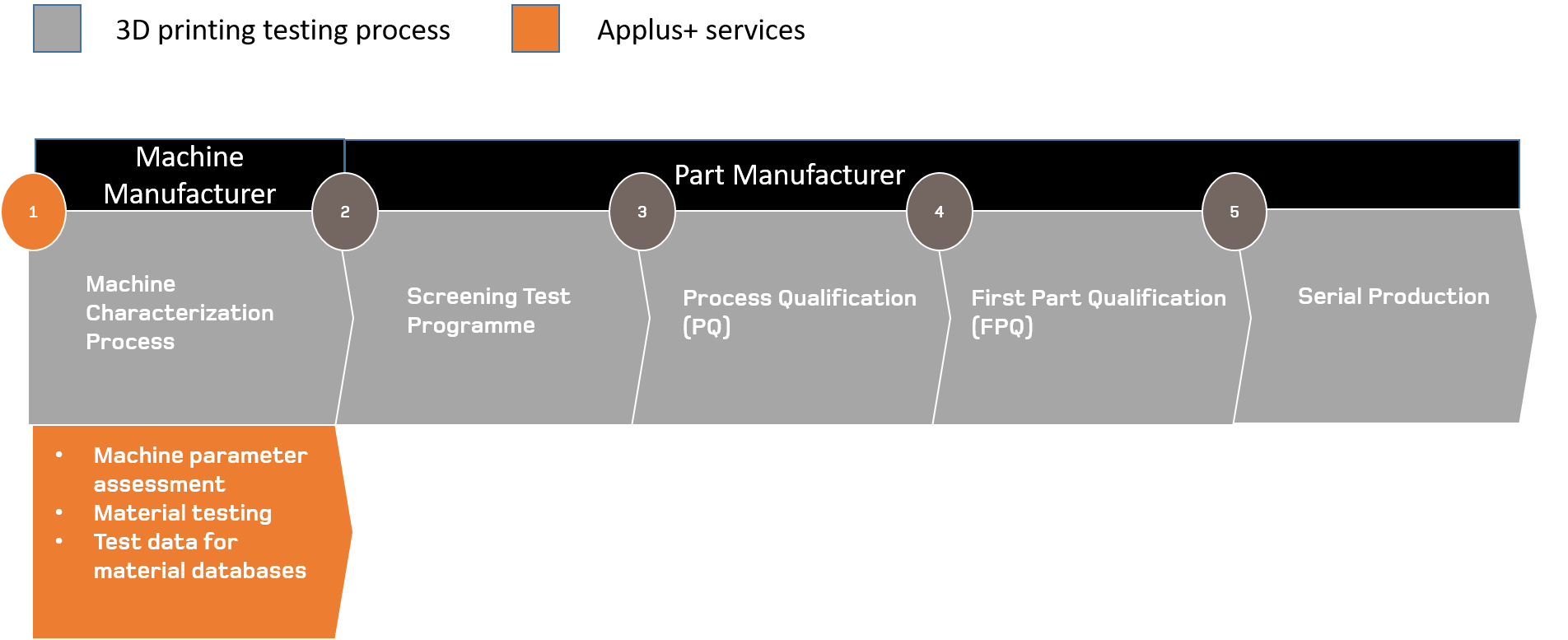
Part manufacturers then install their 3D printers and begin conducting experiments to understand how different material inputs and machine configurations affect process outputs.
So, say for instance that you would like to buy a car… consider this a test drive, to see how it performs and if you are convinced!
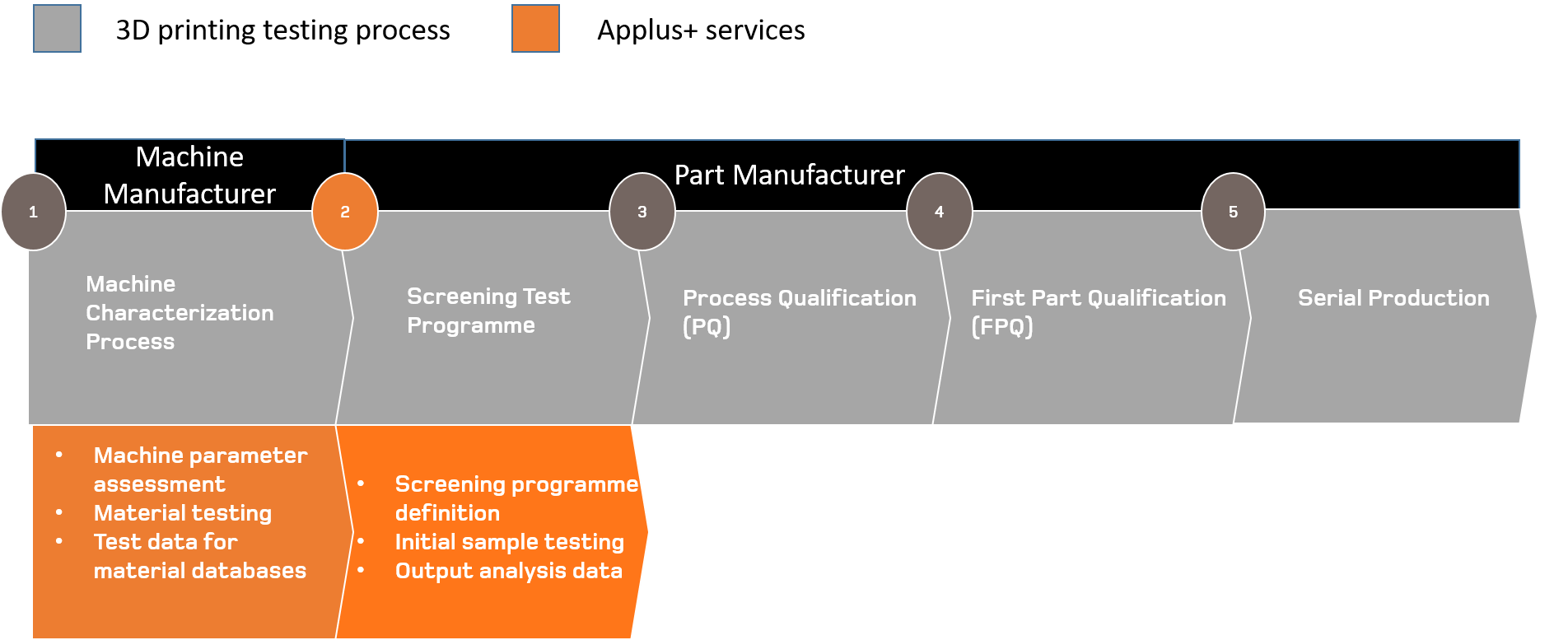
This “test drive” is known as a Screening Test Program and it is at this point that part manufacturers get their samples (outputs) tested and receive their material properties so that they can determine whether the machine is performing according to their expectations and requirements.
In order to do so, they test several combinations of the following elements, with specimens being distributed in different batches: Machine used - Material Type - Powder Type - Parameter Set.
Moving on and as seen in the above diagram, part manufacturers now enter the Process Qualification (PQ) phase. Its goal is to validate the production process and pursue repeatable and consistent results by conducting a high number of tests in order to avoid deviation and obtain stable isotropic material properties with the lowest possible spread.
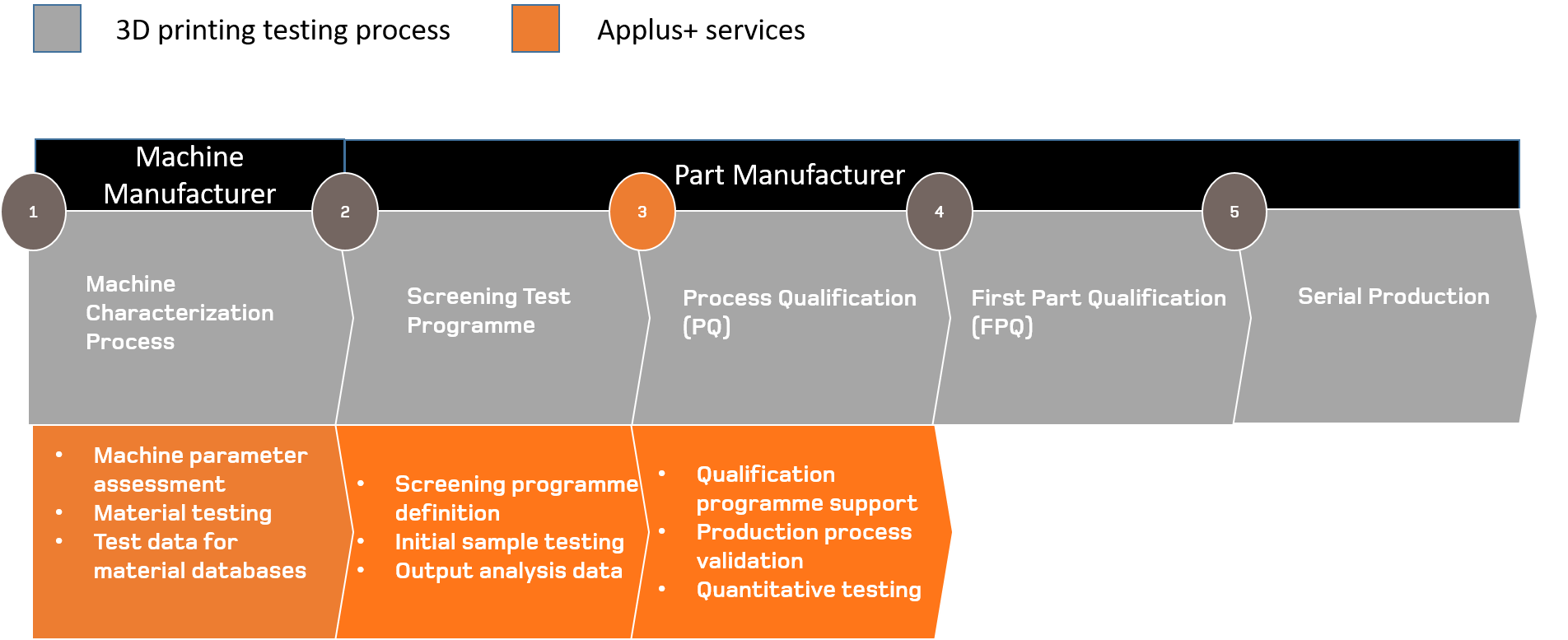
3D printing methods may lead to components being manufactured with anisotropic mechanical properties. Therefore, specific tests are conducted with specimens printed with different build orientations (X / Y / Z) in order to avoid this from happening.
An interesting fact about testing 3D-printed samples is that they do not require to be cut and shaped as those from mechanical manufacturing processes. The specimens are printed out in near-final shape according to testing standards; however, they do need to be CNC-machined and surface treated with mechanical, chemical or galvanic processes in order to be individually tested and detached from the stock piece (blank or workpiece) they are provided on. Additionally, heat treatment processes are applied to reduce porosity and to generate reliable isotropic material properties.
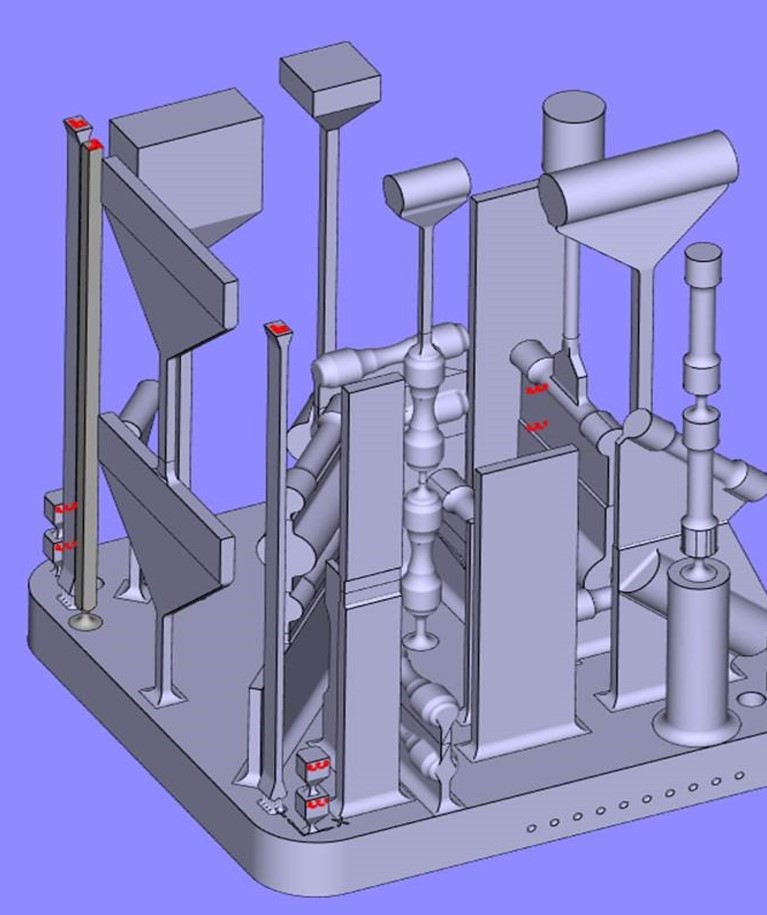
Near-final-shape printed specimens
Significant changes in the part design or dimensions, like wall thickness and printing orientation, can have an influence on materials’ properties and make additional testing mandatory.
As soon as the desired results have been obtained with minimal or no deviation at all, part manufacturers enter the First Part Qualification (FPQ) phase.
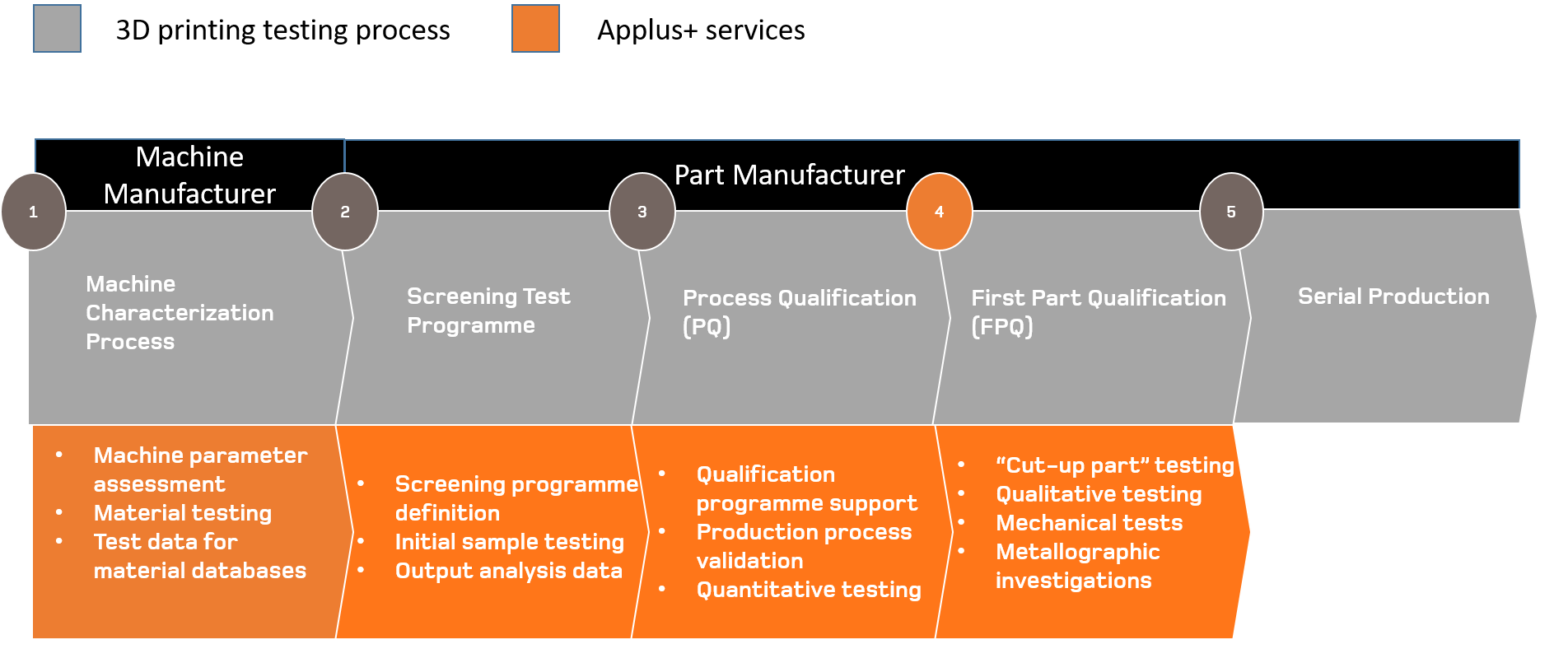
They will now begin designing and printing real parts. The objective is to guarantee that the previously identified material properties from the samples have been transferred to the parts. Samples extracted from the part itself (“cut-up parts”) as well as individual samples from the same batch will need to be tested for this to be successfully verified.
For example, a typical First Part Qualification phase for aerospace parts includes mechanical tests such as tensile testing, fatigue testing and fracture-toughness tests.
After exhaustive quantitative and qualitative testing, part manufacturers reach the Serial Production phase.
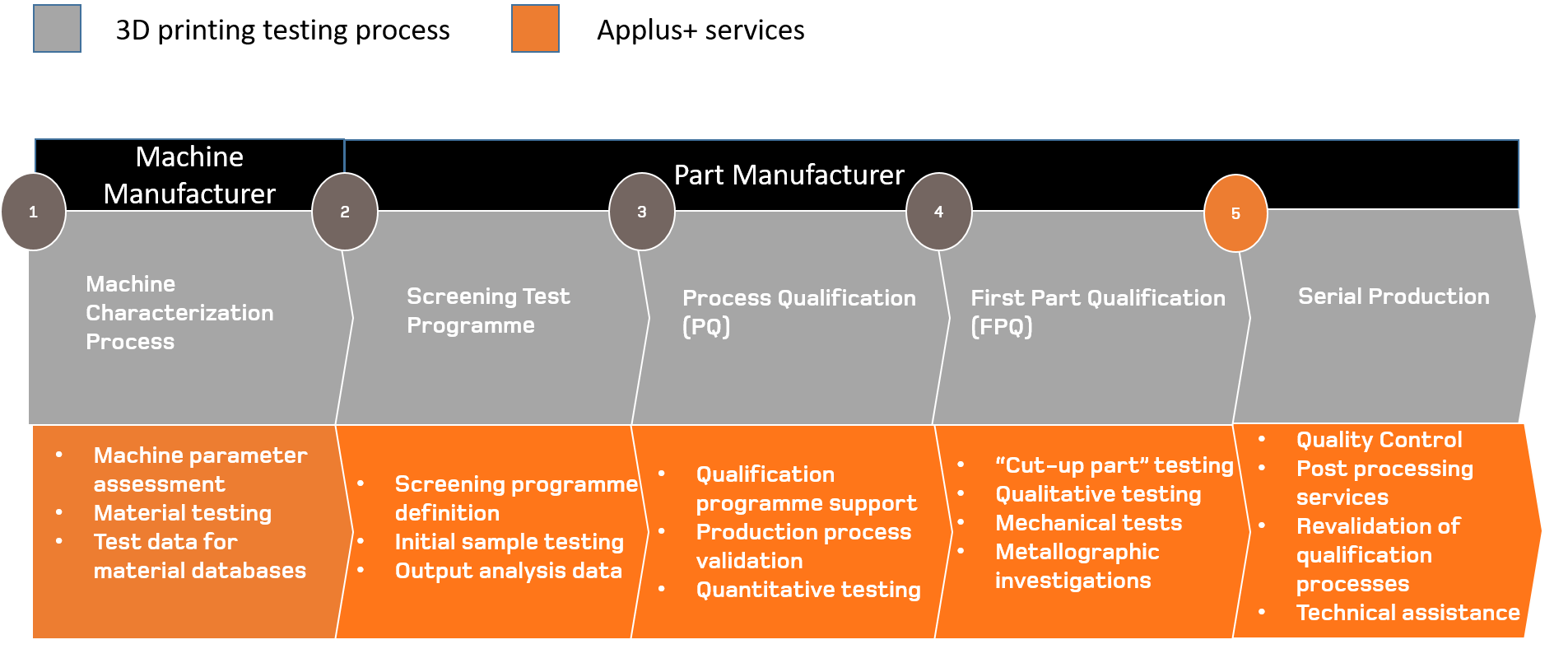
At this point, quality control becomes essential, as part manufacturers need to guarantee the stability of the printing process. Quality control tests performed on the parts frequently include a visual inspection, dimensional control and NDT (such as digital radiography and surface crack inspections). A low amount of samples will need to be printed alongside them in each batch for further testing and will be subject to mechanical tests (such as tensile, hardness) and analytical tests (such as microscopic sections).
Furthermore, part manufacturers will need to perform machine maintenance and revalidate their qualification processes on a regular basis.
Here at Applus+, we have extensive experience in the Aerospace & Defense sector and understand the challenges that come with 3D printing processes. We have developed a range of testing services to support the entire value chain of the additive manufacturing process.
We deliver detailed test results to our customers, including a benchmark study contrasting actual vs ideal test data outputs (if facilitated) and also provide technical assistance for customers new to the 3D printing world that would like to get started and don’t know what tests they can/should carry out during each phase of the value chain.
Would you like more information on our 3D printing testing services or is there something specific you would like assistance with?
Get in touch with one of our experts and tell us all about it!
Written by Sascha Müeller